The innovation playfield is constantly flooded with vague concepts, buzzwords or ill-defined theories. In the end, we all start to use the same interchangeable lingo and shout instructions to our teams, or our customers, that we do not comprehend anymore. Such a key instruction that you’ll find in any innovation book is: be agile. Depending on where you read it, it will be wrapped differently. Accept risk. Keep it lean. Embrace risk. Leverage serendipity. Focus on effectuation. Be opportunistic. Pivot when necessary. Move fast, break things.I could keep on listing these idiomatic injunctions for hours, and you would think they are all the same. And maybe. Maybe, some of them are. But in the end, you’ll write a business plan for your project, because these are just words and you’re rational.
Always respect rationality, it’s a rare resource.
Rationality is Contextual
As an alleged rational myself, I was initially trained in biotechnology and biochemistry. Since science in French high-schools essentially means mathematics and physics, my rationality was biased to these disciplines. But biology is a different ball game. Even later on and after starting a PhD in cell biology, I had to rewrite my brain numerous times to adjust my rationality.
If I had to share an example of how rationality can differ in physics or biology, we should speak about how many proteins in your cells or blood stream, manage to connect, recognize and bind together. Such a process is key to protect ourselves from gazillions of pathogens, to break down molecules in nutrients, or assemble pretty much everything in our body. You would spontaneously think that such processes where an antibody identifies with surgical precision an antigen, or where an enzyme breaks down a specific molecule at a critical spot of its 3D configuration, is done through an ultra-specific process. Well, yes and no. But mostly no at first.
You see, for years when it was discovered how molecules could recognize each other, it was thought that the process was a kind of lock-and-key pattern recognition. Fun fact: given the outrageous variability of biological patterns if a molecule A would have to recognize and match a molecule B, as a very complex key fitting a very complex lock, the mechanism would take years in our body to happen. For an antibody, managing the volume of information to discriminate a surface protein from a smallpox variant, from one of your own neurons, is not compatible with the physics of living. Or it would require a molecular agitation translated in thousands of degree Celsius. Which is way off chart for our puny carbon-based lifeforms.
What actually works is a mechanism called “induced fit” theorized by Daniel KOSHLAND, in 1958:
Millions of molecules float together in the soup inside and outside cells. They bump into each other, get mixed, and several times a second wiggle in other molecules that they could recognize very specifically. But they don’t at first. At first, they just connect approximatively in some superficial spots of their 3D structure. And most of the time that’s it, there’s not enough affinity to push the process further. They just wiggle away. But from time to time, this foreplay unmasks a small surface that presents further affinity, and a closer wiggling happens. Most of the time this advanced foreplay stops by lack of such a further affinity. They just wiggle away. Sometimes though, an adjacent affinity is present and the binding tightens. If another one, and another are revealed, highly specific affinity is achieved. Through such a series of step-by-step small scale affinities, tight matching is obtained.
The end result is a geometrically fast, ultra-specific matching through step-by-step approximations. The straightforward yes or no answer obtained by comparing both molecules in only one step (as a lock and key), was rejected early on by evolution as a clumsy process.
See? Your spontaneous rationality fails in biology. How cool is that?
What is even cooler, is that because each molecule in such processes deforms each other during the fitting process. It means that recognition is not only a collection of pattern-matching process, but also of 3D plasticity that is compatible at every step. But enough with biology, let’s go back to innovation shall we? This key and lock rationality vs. induced fit rationality is for me a beautiful metaphor:
In business, there’s no unique rationality that you can apply to do everything. That’s a bitch to deal with.
Fleeing Approximation
But in any case, you have already built your business rationality. As taught in business school, or as what you had to comply with running a business, is close to a lock and key model:
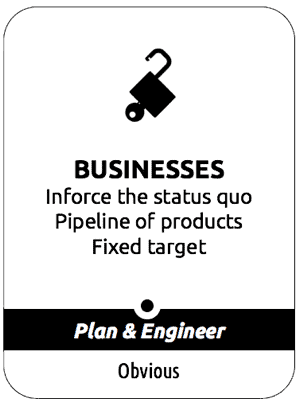
When the market is stable enough, you can plan three years ahead, identify what the customers are asking, plan for it, build it and deliver it. It will work just fine and allows for financial projections to be met with minimal error margin. Congratulations, you’re not in a complex system. To quote the Cynefin framework, you can afford a linear rationality where you “sense, categorize and respond”. It doesn’t mean that it’s going to be easy. It actually may be financially out of reach, or technically impossible with current science or tools, but for what it’s worth, the answer is obvious.
As such, the product you’ll end up delivering to the customer doesn’t need wiggle room. It’s a car, a phone, a fridge, or a word processor. Building and delivering an unfinished car wouldn’t be professional or efficient, wouldn’t it?
The Rationality of Chaos
Now it would be easy enough to admit that if you don’t have to deliver anything, and just have to explore the market in highly complex zones a different rationality should prevail:
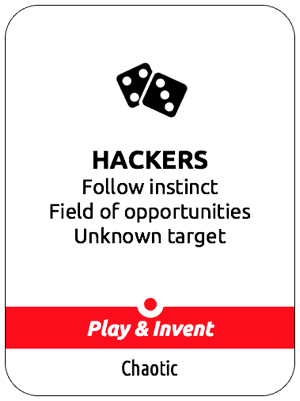
The questions we are trying to answer are still about business. You know these questions. They are the kind of questions that take the medias by storm because they seem to change everything. Such questions could be: ‘What would happen if consumers could directly “print” at home most of the objects they currently buy in retail?’; or ‘What if most of the objects in an office, or an apartment, would be directly connected to the internet?”. Usually after a year or two of buzz, they just appear unproductive and are dropped by everyone. This isn’t about managing complexity anymore. This is about dealing with a chaotic system where there is no model, no template, no rule known at the moment. So, of course, more than often these questions prove pointless, it doesn’t mean they shouldn’t be explored to future-proof your business.
And this is where hackers rationality prevails, even if for people educated in business, their rationality sounds like a lack of one really. Business rationality and hacker rationality are so far apart, that they look just alien to each other.
But see, the value of this form of rationality is that it deals with a maximum level of uncertainty and creativity. Without any deliverables to meet yet, or solid market to satisfy next year… serendipity can work at full speed.
This kind of rationality is actually close enough to fundamental research rationality. Consecutively, past the fast-prototyping pretense, good luck explaining to a multinational executive committee how a fab lab team could contribute to strategy.Not that you couldn’t: it’s actually a ‘shotgun approach’ where you try to beats the odds by a massively random approach to the problem. If you screen millions of solutions, you are bound to find one that fits best, and that was surely unpredictable in a chaotic environment.
The Rationality of Approximation
But there’s not that many chaotic problems to be solved in business – or again you’re probably just involved in fundamental research and should probably reroute to a university lab. Most of the innovation problems we have to tackle are kind of in-between the business and the hacker rationality. Here’s lie a big part of the innovator’s dilemma.
We have to deliver something that works as precisely as possible for the market, but we don’t know what exactly yet:
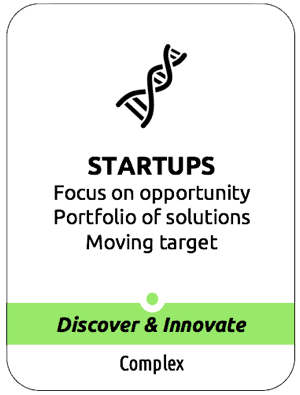
We work in a zone of the market that is changing, and accelerating away from a previous status quo, but some old rules still apply. This is a conundrum difficult to deal with. In such a complex zone (again quoting the Cynefin framework), “the relationship between cause and effect can only be perceived in retrospect, but not in advance”.
This is the world of startups and on rare occasion, corporate incubation.
This is also the mode of rationality that is closest to biology and the induced fit mechanism. In a complex market situation, a straightforward ‘perfect-fit’ solution is suicidal, if not plain dumb. You should think of your would-be product in term of biology. Something that should be able to wiggle in the market, map new affinity zones with the customers, adjust to them by quick step-by-steps, and eventually ‘click-in’ in a way that was not entirely forecastable. But also, not entirely random, because you DO know things about the market. In innovation, induced fit’s rationality beats key-lock’s.
Or in layman’s terms: good enough beats perfect.
The Rationality of Global Domination
Hopefully, I’ve managed to put our introductory buzzwords of agile, lean, etc. in a clearer perspective. You will then keep in mind that there is no specific rationality in business or innovation. You “just” have to identify which mode of rationality to apply, how and when. But that quick tour wouldn’t be complete if I wasn’t also to point the fourth major rationality that is at play:
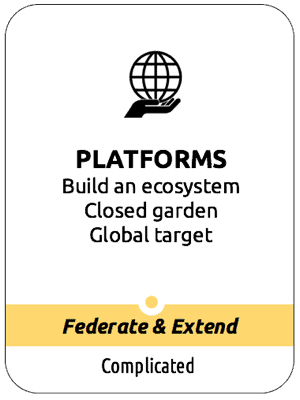
Opposite to startups and the way they innovate through as much as possible contact points with small approximations to adjust to a moving market, platforms act differently. Platform focus on a single dimension. They then create maximum flexibility on this dimension, to embark customers as deep as possible in their closed garden. Amazon is only delivering retail goods, but all of them. Apple is only trying to facilitate your life, but at every moment of it. Facebook is only connecting you with people, but all over the planet. Etc.
Such rationality favors scale over deep market affinity. Market affinity is important to the extent it builds up critical mass and positive inertia around the system. Obviously, if you have all your data in Apple’s cloud already, you will have foreseeable incentives to buy their watch. But not as much if your data are in Google garden.
Approximation Beats Engineering
As often, many of us working on innovation are fighting sometimes solitary wars. We strive to explain that there is no silver bullet that will cure all problems to customers in panic. It is only natural to want a clear beacon and a simple promise if you face uberization. This is understandable. But cannot be done, because essentially you would ask a ‘perfect fit’ solution coming from outside your company to turn around all the mistakes that were accumulated by your management for the last ten years.
The only one that can answer this call are delusional, or crooks.If there is no ideal ‘key’ for you, you can bet there’s no master key that will unlock all innovation problem of all companies.
But if you step back and start to see what kind of rationality you may want to apply at different steps of a project, things start to fall in order. The resources involved, the kind of KPI you’ll need, the kind of flexibility you’ll have to invest to… Even the kind of prototyping you’ll need will answer to certain rules.
We happen to play a lot with these tools to decide for instance how many ‘flexible points’ a MVP would need, and the level of flexibility that will be involved. And for startups, the deal will usually be to have a product 50-60% finished with as many small flexibilities as possible.
This is how you learn the best from the market in complex zones of the market, and there’s a sweet spot for it:
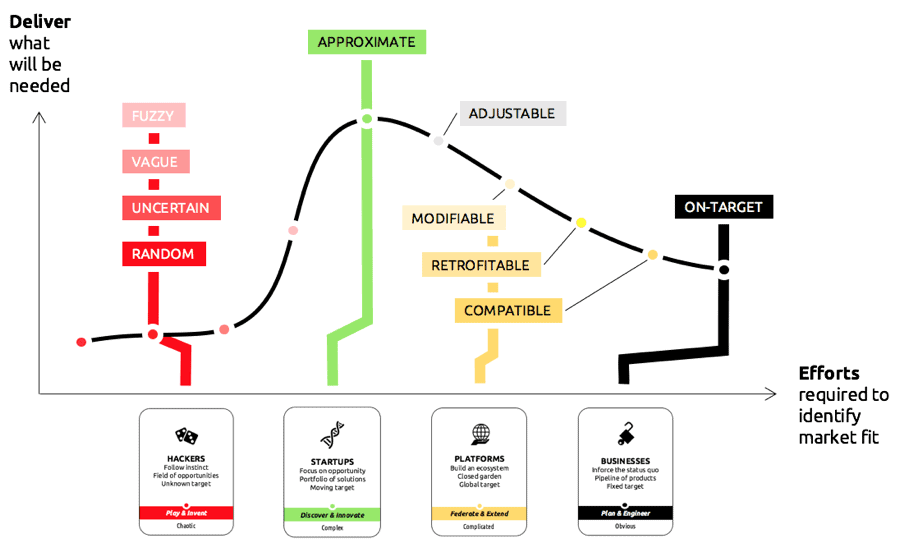
Once you know what you are doing most designers are usually excellent at helping you build such prototyping. But they have to know what’s the rationality you’re using, or they’ll drive themselves to the hacking fun-zone. Then you loose them and more importantly, they consume your burn-rate unproductively.
The upside of all this, though, is that there is no byzantine ‘lock’ to decipher for startups.
It’s most of the time a case of getting out there with sound approximations and adjusting these approximations with discipline and persistence. This is why Steve BLANK is perfectly rational when he admonishes you with a “Get out of the building”. Or why a ‘minimum viable product’ is defined as something that you should be ashamed of (if you’re not ashamed, you spend too much time refining it using off-topic business rationality).
Why so sad?
Lastly, I would remind you that this is all linked to a degree of cultural optimism.
You will not ever be comfortable with approximation when you strategically need it if you don’t understand that risk and optionality are what weaponize startups and rupture innovation.
How risk is seen in a country, pretty much defines its capacity and growing a startup ecosystem. And risk only measuring the level of incertitude you’re facing, optimistic cultures have an innate competitive advantage in innovation.
This is a stubborn fact that many of us don’t want to draw consequences from:
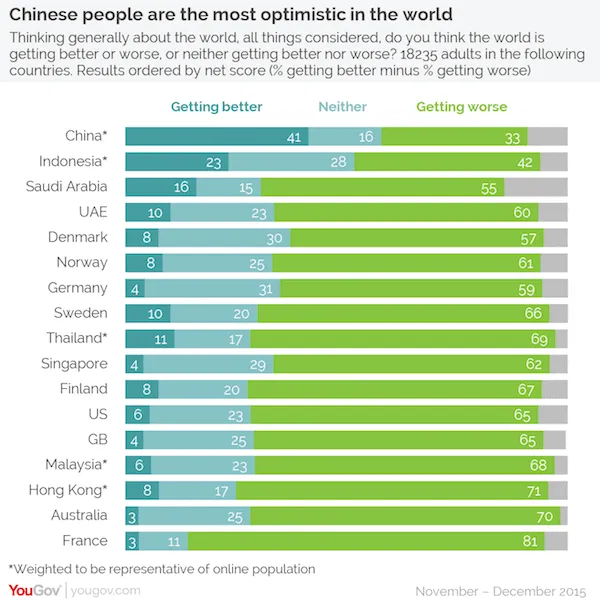
Maybe you should? Because if this cannot be changed country-wide, this can certainly be adjusted within your business unit, or your organization.

